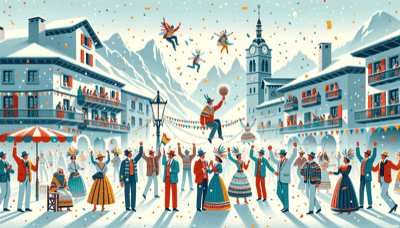We're here to help you keep count of the days to or since a date. Just click the button below and enter your chosen date to get started. Also choose the suggested days or search for a special day above #countingthedays

Carnival in Andorra, known locally as "Carnestoltes," is a traditional celebration that takes place before Lent, usually in February or March. This festival has roots in pagan rituals and was historically a time when people could indulge and enjoy themselves before the period of fasting.
The history of Carnival in Andorra dates back centuries and combines elements from various cultures due to the principality's position between France and Spain. Over time, it has evolved to include Christian traditions. The festivities are marked by parades, costumes, masks, and satirical performances that often poke fun at social and political issues.
Traditionally, each parish in Andorra holds its own celebration with distinct customs. One of the most unique aspects of the Andorran Carnival is the presence of characters such as the "Contrapàs" and "Marratxes," which are specific to certain villages. These characters engage in antics that symbolize the overturning of societal norms during this period.
During modern times, Carnival festivities in Andorra include:
Parades: Colorful processions with elaborate floats and participants dressed up in vibrant costumes.
Dances: Traditional dances performed by locals wearing intricate outfits that have been passed down over generations.
Music: Live music with bands playing both contemporary tunes and traditional melodies.
Feasts: Communal meals where special dishes are prepared, providing an opportunity for locals and visitors to enjoy regional cuisine.
Children's Activities: Special events for children such as face painting, games, and children's parades.
People from all walks of life participate enthusiastically in these celebrations. The atmosphere is joyful and convivial as residents come together to honor their cultural heritage through this annual event. The Carnival period concludes on Ash Wednesday when participants symbolically bury a sardine to mark the end of festivities and the beginning of Lent.